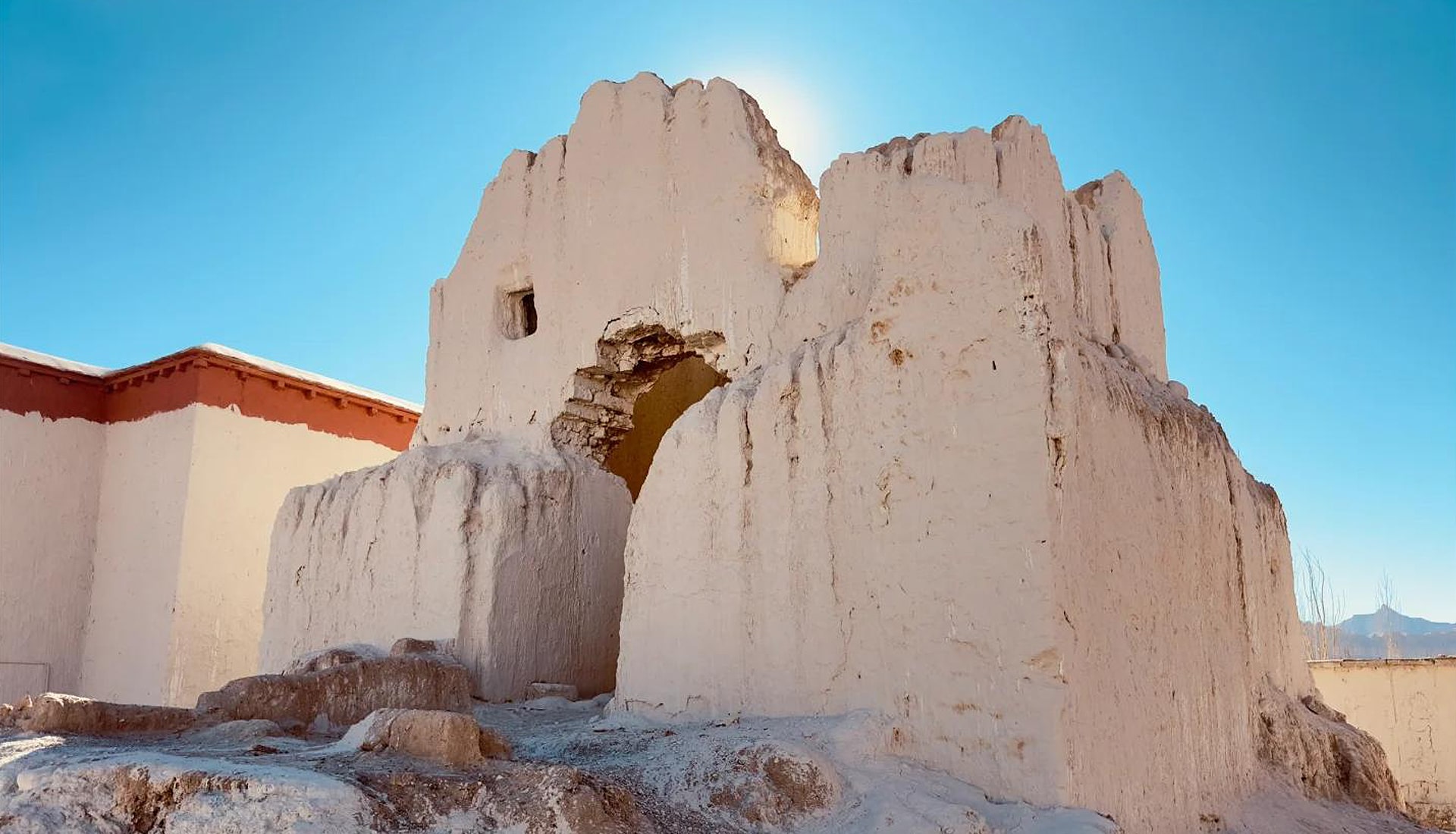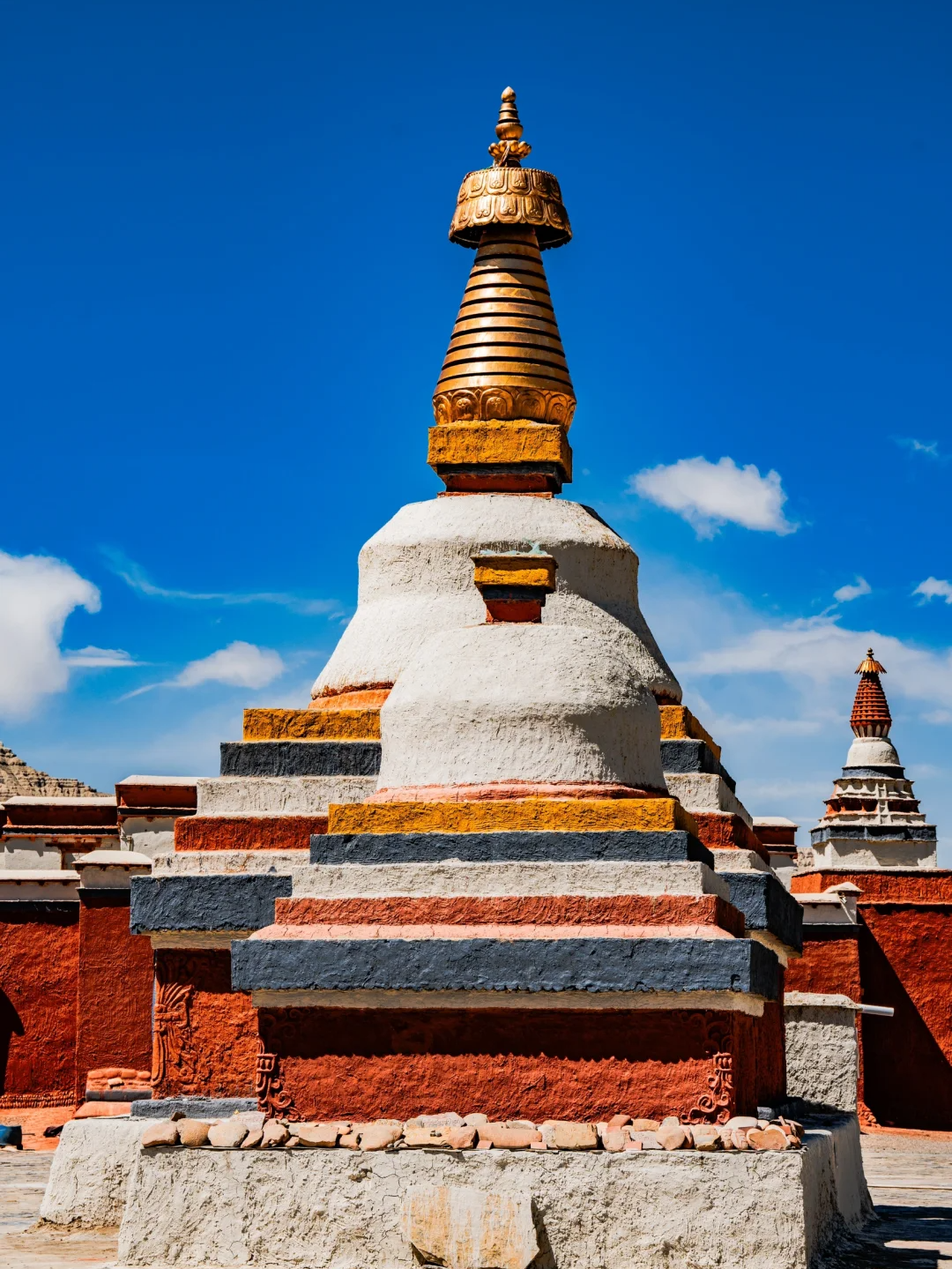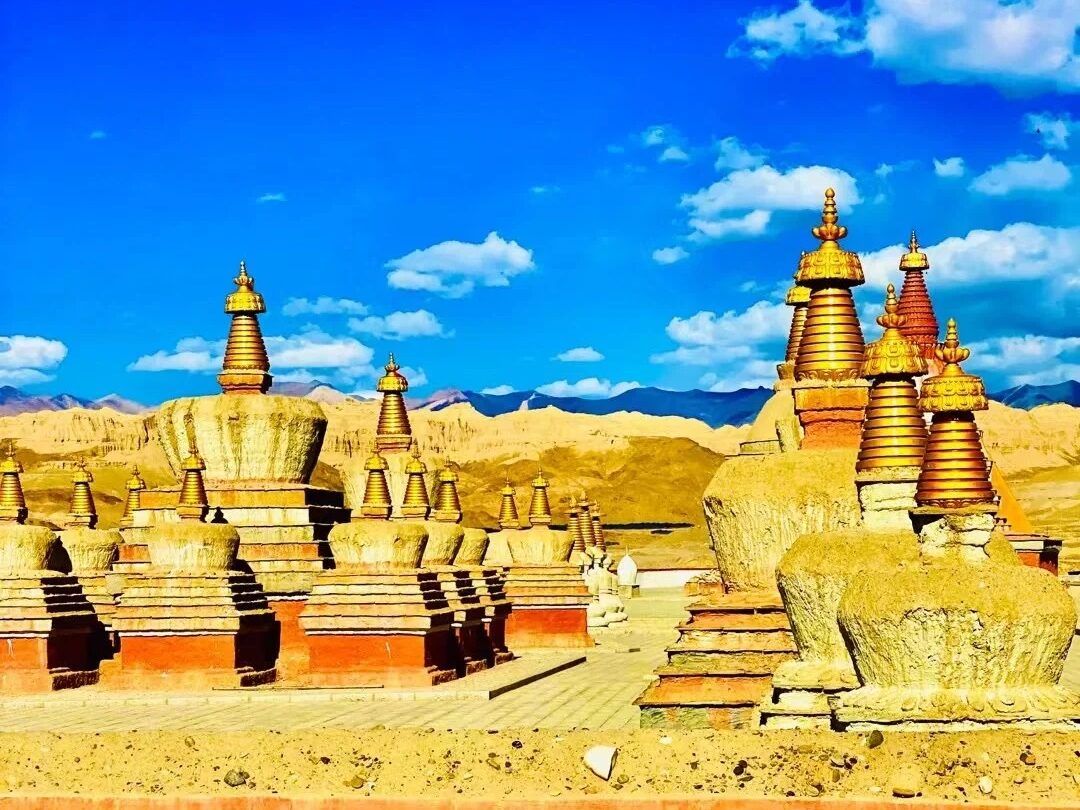Tholing Monastery, meaning “Flying Monastery” in Tibetan, is perched on a terrace by the Xiangquan River in Zanda County. Backed by earth forest formations and facing the river, its halls, stupas, and walls are scattered like stars. From an elevated viewpoint, the monastery reveals a magnificent three-dimensional mandala layout. The stupa ruins offer exceptional spots for capturing sunrise, sunset, and starry skies. Prayer flags, mani stones, stupas, and earth forests together create Zanda’s unique landscape. The open space north of the monastery is ideal for panoramic photography. Beyond the stupa walls and scattered stupas, the monastery’s unique architectural forms are also worth photographing. Tholing Monastery’s layout is belt-shaped, comprising halls, monks’ quarters, and a stupa forest. Key structures include the Ghasa Hall, White Chapel (nunnery), stupas, Arhat Hall, Maitreya Hall, Protector Hall, Assembly Hall (Lhakang), Sekang Hall, Atisha Sutra Hall, prayer rooms, Larang, and monks’ residences. The monastery played a pivotal role in reviving Tibetan Buddhism after centuries of decline, significantly influencing the development of Tibetan culture and Buddhism. Its architecture blends Indian, Nepalese, and local Tibetan styles, serving as valuable material for studying regional architecture, sculpture, and painting.






